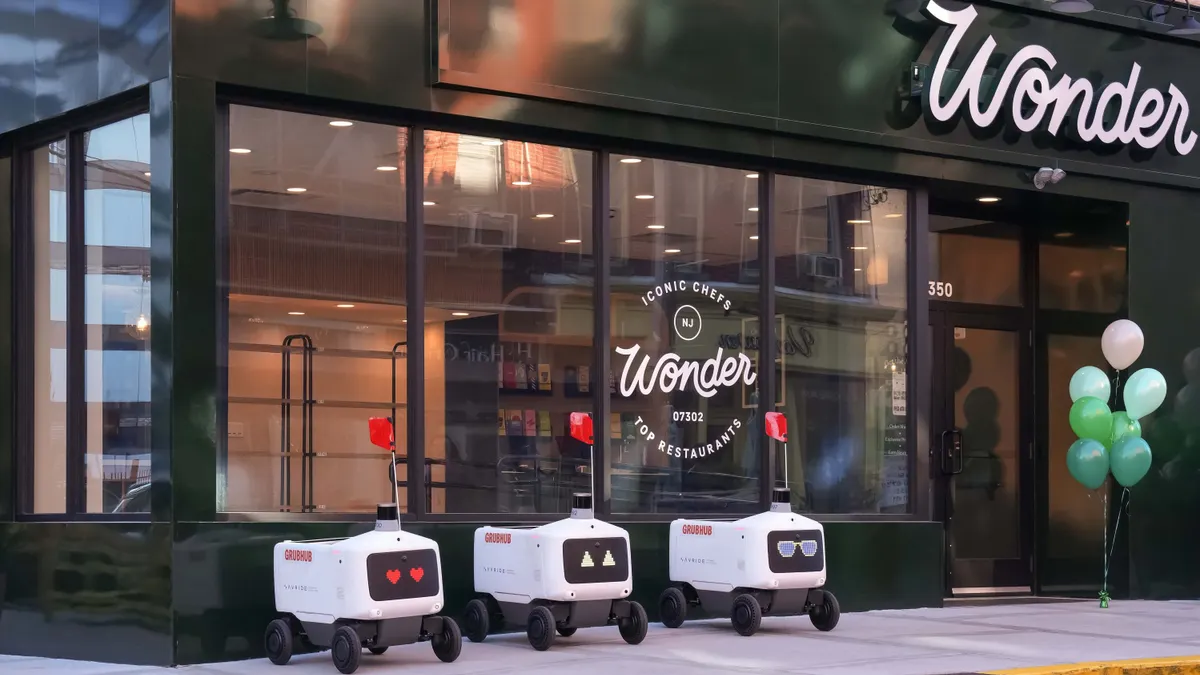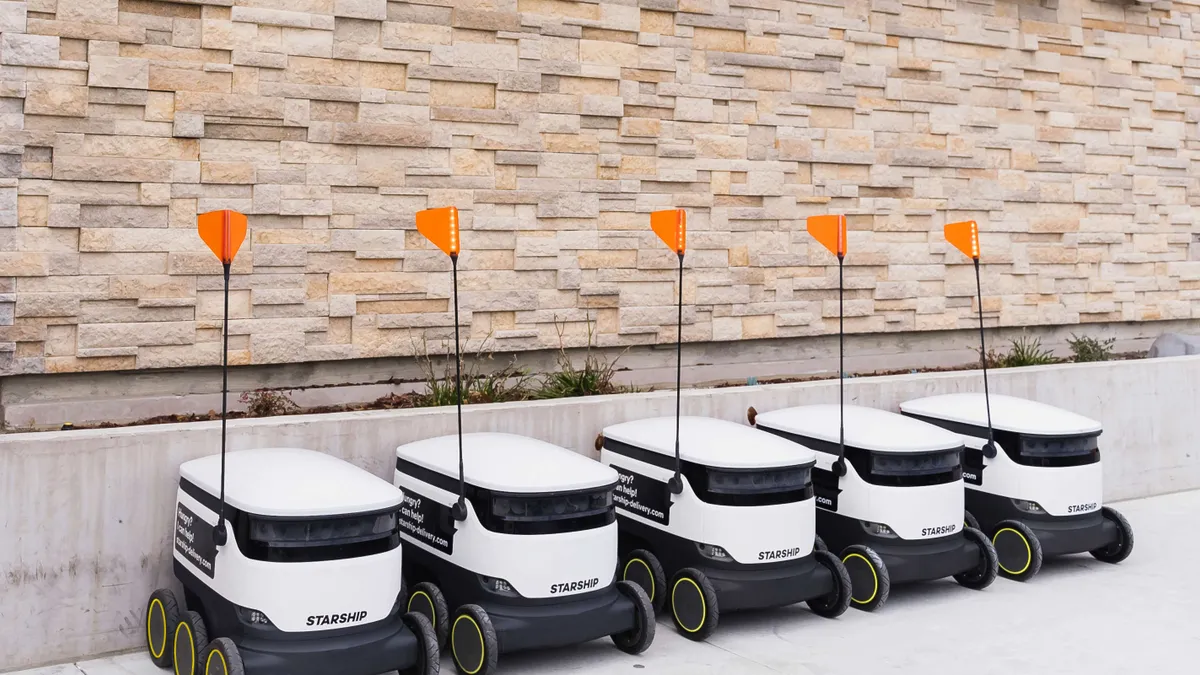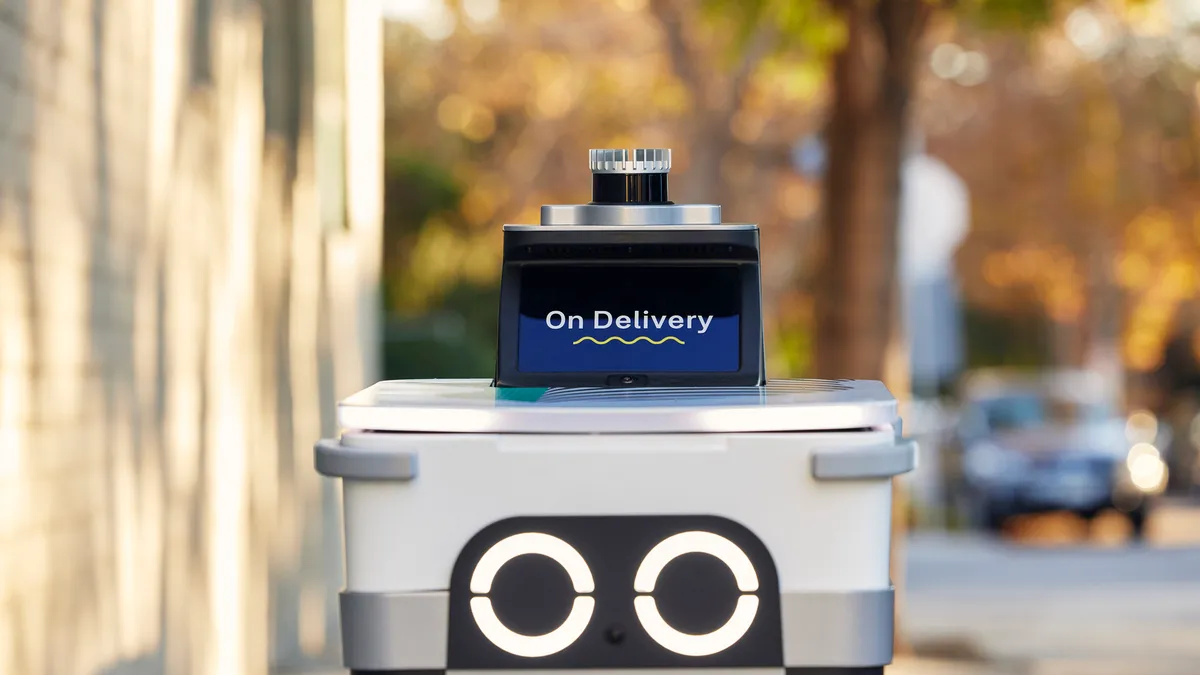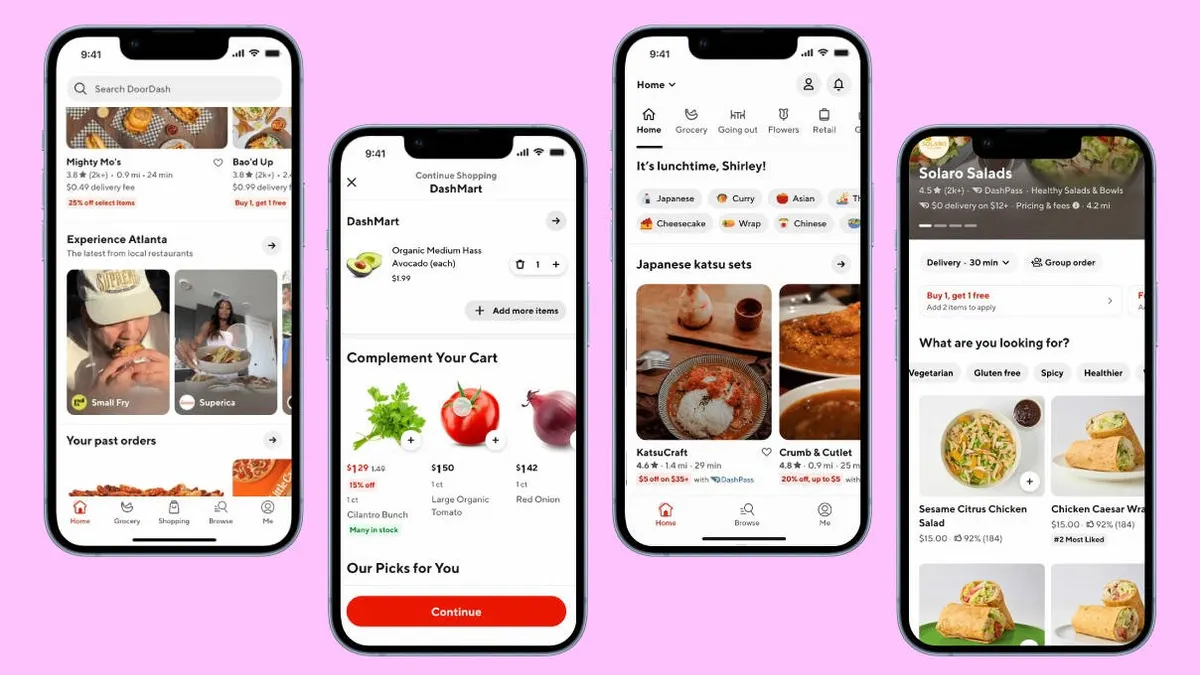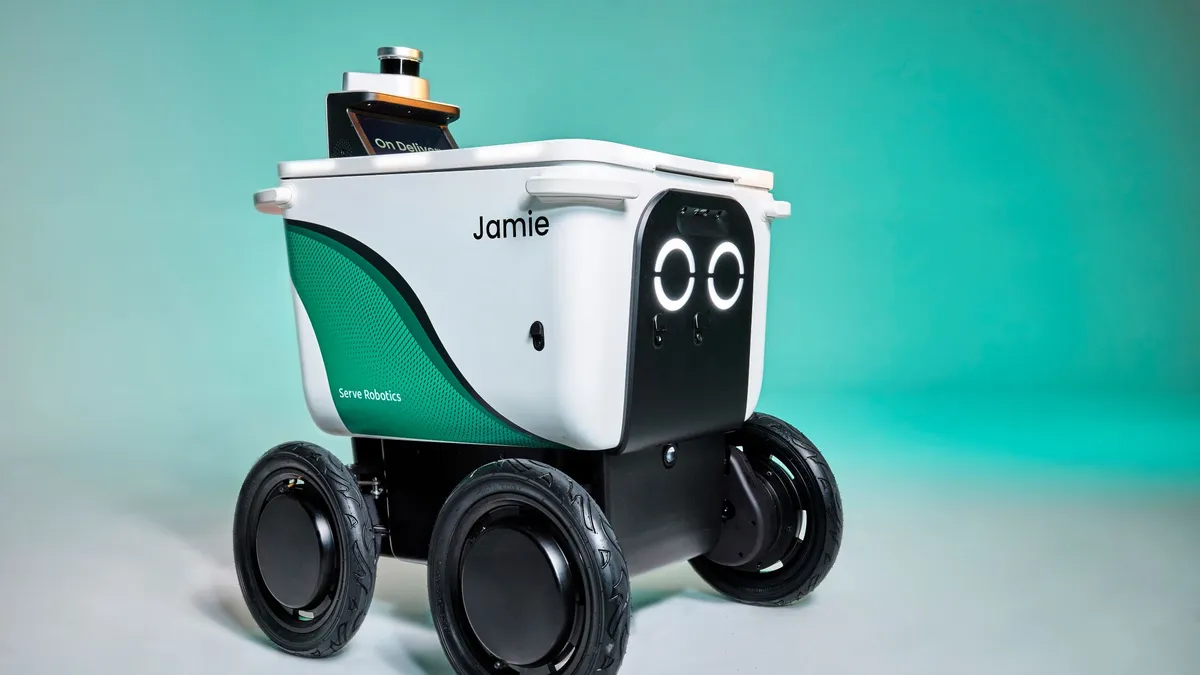For third-party food delivery company Waitr, 2019 was a bad year. Even though revenue grew 177% following its acquisition of Bite Squad, Waitr reported over $291 million in net loss, and shares were trading at less than a dollar.
"It grew very rapidly and like [what] occurs in a number of companies, the business grew beyond the capabilities of the management team and then they were thrust into being a public company," said Carl Grimstad, who became Waitr’s CEO in January.
After the Bite Squad deal, the company nearly doubled the size of its business, but costs and expenses increased to $472 million in 2019, more than a 350% increase from 2018. Waitr had lost nearly $60 million in earnings before interest, depreciation, taxes and amortization.
The small company was shouldering significant debt, had covenant issues and its cash position was dwindling, Grimstad said.
"There was a lot of financial waste that was going on at the company that had to be rectified," Grimstad said. "We had to make some quick decisions and changes in January and February that now we’re starting to see get pulled through in the income statement."
To become more profitable, Waitr switched its employed drivers to 1099 independent contractors, reduced discounting, improved its relationships with restaurants, created a more rational pricing structure and expanded its restaurant network to attract new customers.

And it worked. As of June 30, 2020, the company’s EBITDA year-to-date had risen to over $20 million and net income for Q2 exceeded $10 million, according to an earnings release. As of July 31, the company boasted $87.3 million in cash on hand, helped by an at-the-market common equity offering program, which led to gross proceeds of over $48 million.
Outside of shoring up financial windfalls, Grimstad’s strategy was to ensure Waitr provided a valuable service offering to drivers, diners and restaurants.
This focus has helped. Orders are up, restaurant partnerships have grown and its driver network is bigger now than before Grimstad started.
"I think there’s no question the company’s been doing very well ever since Carl Grimstad took over as CEO," Alex Fuhrman, senior research analyst at Craig-Hallum Capital Group, said. "For the first time in the company’s history, [there’s] a really strict focus on cost and being profitable and limiting costs."
Reducing costs, improving service
When Grimstad first took the helm, he set out to do every job in the company, including delivering food and sitting at the customer service center for hours dispatching drivers. He also spoke with restaurants and drivers to better understand Waitr.
Grimstad quickly discovered that drivers didn’t like the W-2 model because it limited their hours.
"Those that really wanted to make money were left to the infighting of getting the right shifts," Grimstad said.
He found that partner restaurants didn’t think employing drivers differentiated Waitr from other delivery platforms, and wouldn’t pay more to work with employed drivers.
Management previously thought if a driver could complete a certain number of deliveries per hour it would make sense to have them on payroll, but Waitr never actually met those thresholds, Grimstad said. Employing drivers was also a fixed expense, whereas a contractor model had variable costs, he said. On top of these challenges, Waitr also faced several employment lawsuits that alleged it paid below federal minimum wage after deducting expenses.
A switch to independent operators allowed the company to quickly grow its driver network, even after the change led to over 2,300 layoffs. In April, the company said it received 28,000 new independent contractor driver applications during a three-week period.
By July, the company had over 19,000 independent contractor drivers, Grimstad said. Comparatively, Waitr had just over 10,100 employed drivers in early March, according to an SEC filing.
"The continued demand for our services enables us to provide communities with employment opportunities for drivers," Grimstad said in a press release. "The increase in the number of drivers, in turn, expands capacity and improves service for our restaurant partners and diners."
While the third-party delivery industry continues to face criticism over working with 1099 contractors, the model offers a lot of benefits for both drivers and aggregators, Fuhrman said.
"It’s difficult for [aggregators] to predict what their demand is going to be like on any given day," Fuhrman said.
Fuhrman, who is also a DoorDash driver in Minneapolis, said that if it’s raining outside, he knows it will probably be a good day to get in some nice orders, but if he were to work for a company where drivers were W-2 employees, he wouldn’t be able to take advantage of the weather if he’s not scheduled that day.
"It helps make it a little bit more flexible when you’re going to need more drivers and when you’re going to need fewer drivers," Fuhrman said.
Contracted models pay drivers and couriers by the order, so skilled contractors who know their area well and can deliver more than the average driver can maximize their earnings, Fuhrman said.
"[Having independent contractors] gives the company so much more flexibility and our drivers are happier," Grimstad said.
Another impactful change to Waitr’s expenses was a reduction in coupons, Fuhrman said. Close to or more than half of Waitr and Bite Squad’s orders had a coupon attached to them before Grimstad joined Waitr, Fuhrman said.
Waitr stopped offering coupons en masse and now only about 10% of orders have a coupon code, he said.
"We’re very thoughtful about any kind of capital investment we make in this business, whether it’s advertising, promotions or what have you," Grimstad said.
"[Having independent contractors] gives the company so much more flexibility and our drivers are happier."

Carl Grimstad
CEO, Waitr
Waitr focuses on its restaurant selection and expanding its delivery range to create more incentive for customers to order from the platform, Furhman said. The company expanded its delivery areas to as far away as 12 miles from certain restaurants, which is double Waitr’s current reach in some locations, according to a press release.
"When looking at our delivery areas for restaurants and driver supply, it became clear that we could push the boundaries to help our restaurants reach more diners, which will help these restaurant partners survive and provide us new opportunities to grow," Grimstad said in the press release.
Fuhrman said when he delivers food via DoorDash, he’s never even come close to driving 10 miles for any one delivery. If customers are ordering from a restaurant that is eight or nine miles away, they will have to pay a higher fee, Fuhrman said.
"Waitr has gotten better at really optimizing the delivery fees to take into account the distance and the willingness of the customer to pay that," Fuhrman said.
The company also worked on improving operations to make sure that orders were no longer lost because of mistakes. That included hiring about 225 customer service and dispatch team members in Louisiana this year, as of June 30, which replaced plans to have these positions based in Mexico.
The biggest push, however, was partnering with more restaurants to help grow order counts, which was not a focus of previous management.
"That’s just so wrong," Grimstad said, adding that within its markets, it has the goal of adding every restaurant to its platform to help improve customer retention.
As of June 30, Waitr had about 18,000 restaurants on its network across 700 cities — adding popular chains like Five Guys and Landry’s — compared to 16,000 restaurants in over 600 cities as of March 31, according to SEC filings.
Under Grimstad the pricing model this year is more similar to its competitors, which typically charge a set per commission per order and a marketing fee if these services are being provided.
"We’re in the enviable position to be able to look at what our competitors are doing and pick and choose what seems to be working," he said.
Last year, on the other hand, Waitr changed its fees several times. In May 2019, its increases led to a class-action lawsuit in which restaurants claimed it broke its contract when fees rose from 10% to 15%. And in July 2019, it revised its fee structure to one based on performance, which resulted in significant pushback from restaurants, some of which boycotted the brand.
"Their service offering was mispriced and there was really no rhyme or reason to the strategy of pricing," Grimstad said.
The aggregator’s efforts to help restaurants during the novel coronavirus pandemic also improved its relationship with its partners. Waitr has been working with new and existing restaurant partners to help boost delivery potential by providing free marketing and promotional support and discounted delivery fees, according to an earnings press release.
"Ultimately, we’ve evolved into a world — and COVID has helped with this — [where] third-party food delivery is no longer debatable if you as a restaurant owner should be on these platforms," Grimstad said. "It’s mission critical."
The impact of COVID-19
Restaurants aren’t the only businesses seeking Waitr’s services during the pandemic — grocery stores are too. The company expanded into same-day grocery delivery with local markets and alcohol delivery earlier this year. In March, Waitr partnered with Ralphs Market in Baton Rouge, Louisiana, providing personal shoppers in addition to delivery drivers to fulfill orders. It added NuNu’s Fresh Market in Lafayette, Louisiana, in May.
By June, Louisiana changed its alcohol delivery laws, allowing 1099 contractors to deliver for third-parties, which will help Waitr expand further into delivering alcohol, Fuhrman said.
During the pandemic, Waitr also added no-contact delivery and provided gloves and sanitation spray to drivers, and said it would continue to pay any employee that was quarantined or had contracted the virus, according to a press release.
Grimstad said he lost sleep over what would happen if someone got sick at the operating center, so he allowed everyone to work from home. He also wondered if the virus would become so rampant that everyone would soon have food delivered, creating a level of demand that would be difficult to meet.
But this latter concern quickly abated, with Waitr fielding 30,000 driver applicants during some weeks at the start of the crisis, he said.
"In March, we saw order volumes really fall off the page," Grimstad said. "And we hypothesized that that wasn't because people were worried about getting sick. It was the economic reality hitting people that they didn't have jobs. When the subsidies hit in early April, our order volumes snapped back and then some."
Average order volumes as of June 30 reached 44,241, an increase of 18% compared to the year-ago quarter. Orders are also up 18% compared to Q1 2020.
And as dine-in operations have resumed in the South, where Waitr’s biggest markets are located, demand for restaurant delivery hasn’t faded, Fuhrman said.
"Online ordering is not going anywhere," Fuhrman said.
But even as demand remains strong, the volatility of the economy paints an uncertain future for Waitr.
While it is too soon to see the true economic impact of the pandemic, Grimstad said the biggest risk to the business is 25 million people being out of work.
"Third-party delivery has been validated as a mission-critical service, but that being said, [if] people don’t have jobs, all businesses will be hurt," Grimstad said.
Delivery consolidation
How the economy recovers could also determine the future of the delivery industry, especially given how consolidation accelerated in the last few months, with Uber buying Postmates and Just Eat acquiring Grubhub.
"I’m a big believer in consolidation. Both in Asia and Europe, consolidation has benefited the entire food chain, so to speak," Grimstad said. "Companies got healthier and in turn, I think that it allows them to service their constituents in a more effective way."
With so many competitors in the U.S., the food delivery industry has been plagued with profitability issues due to heavy discounting and marketing and a need to grow rapidly to gain more customers.
"It doesn’t help anyone to see some of the industry participants losing as much money as they’re losing," Grimstad said.
Waitr benefits from being in second- and third-tier markets where competition is more rational compared to the larger, national companies, Grimstad said.
"Rather than having small market share in a large number of markets, they have a large amount of market share and a small number of markets and I think that could make them attractive to someone looking to extend their position ... or really take a leadership position there."

Alex Fuhrman
Senior research analyst, Craig-Hallum Capital Group
"In the United States, I don’t know if you wind up with two or three [aggregators], but [consolidation is] going to happen," Grimstad said. "I’m happy that it’s happening a little faster than I thought it was going to be, but I’m happy that we’ve been able to get some positive momentum and some transparency to the value of our business."
Waitr could even be an attractive acquisition for other companies, especially since it is either No. 1 or No. 2 in its biggest markets, Fuhrman said.
"Rather than having small market share in a large number of markets, they have a large amount of market share and a small number of markets and I think that could make them attractive to someone looking to extend their position ... or really take a leadership position there," Fuhrman said.
There also aren’t that many standalone companies left either, and with EBITDA margins of 28%, it is likely one of the most profitable companies in the industry, Fuhrman said. Grubhub’s EBITDA margins for Q2 2020, for example, were 3%, according to an SEC filing. These margins are calculated as a percentage of total revenue.
But as far as Waitr is concerned, management will continue to focus on its constituents and improving its financial conditions, and Grimstad didn’t allude to either buying other companies or selling Waitr.
"We will see what comes next," Grimstad said.









